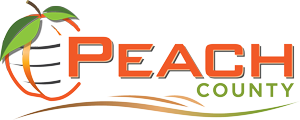Soil and Water Conservation
Soil and water conservation districts are a legal subdivision of the state of Georgia. They were created in 1945 and serve selected counties in the state. Georgia’s resource conservation program implements best management practices regarding the administration of its natural resources. Its function is to describe to each conservation district practical guidelines for land development by working with individual land owners, associated agencies and other interested parties.
Conservation Districts serve as the bridge between federal and state resource management agencies and land managers. While natural resource conservation is a national priority, the guiding philosophy of all Conservation Districts is that decisions on conservation problems should be made on the local level, by local people, with technical assistance provided by government. Direct funding for Conservation Districts comes from a variety of sources, including government grants, special projects and others. Federal Assistance is provided through hiring and assigning of technical experts to each District. Private donations and contributions are also made by those individuals, businesses and organizations committed to a cleaner enviromnent like our affiliate members.
The Ocmulgee Soil and Water Conservation District works with natural resources. Technical assistance is delivered through a Board of Supervisors charged by state law with meeting local natural resource and conservation needs and priorities.
Technical support is provided by the United States Department of Agriculture's Natural Resource Conservation Service (USDA-NRCS) through a memorandum of understanding. The public is encouraged to use assistance provided by the District.
Consultative assistance is provided in dealing with soil and water problems. Service is available to private individuals, contractors, public officials, clubs and groups or agencies needing technical guidance in solving soil and water conservation problems.
Technical assistance is provided to land users who need more detailed help in solving conservation problems. Examples of technical assistance include soil survey interpretation and conservation plans as well as design and construction supervision of practices.
Technical assistance is also provided to county and municipal governments, area planning and development commissions, authorities, zoning boards, institutional boards, health departments and others. It normally includes soils interpretations and inventory data on agricultural and nonagricultural land.
USDA Service Centers are designed to be a single location where customers can access the services provided by the Farm Service Agency, Natural Resources Conservation Service, and the Rural Development agencies.
